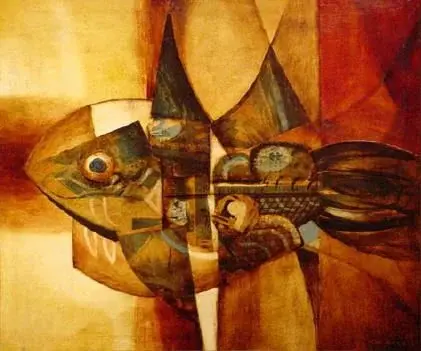Panama is renowned as a transit nation due to the iconic Panama Canal. Beyond that, Panama boasts a biodiversity that surpasses that of the United States, Canada, and Europe combined. The nation’s remarkable landscapes and the distinctive cultural fusion found in Panama City have been a wellspring of inspiration for numerous artists. In this article, we will take a look at 3 Most Famous Painters from Panama.
Marco Ernesto

Marco Ernesto, popularly known as “The Palette Knife Master” was one of the most influential Panamanian painters. Born in Panama in 1922, Marco Ernesto’s life began with his parents’ relocation to the country for several creative projects. In this 7-year span in Panama, Ernesto and his siblings Gustavo and Alicia were born. Under his father’s tutelage, Ernesto cultivated drawing and color skills. Returning to Ecuador in 1930, he studied at Quito’s School of Fine Arts, marked by familial ties.
Exhibiting from 1937, Marco Ernesto’s art transcended borders, with a significant show in Colombia. Traveling extensively, he absorbed diverse palettes, influencing his evolving post-impressionist knife technique. His artworks graced galleries across Latin America, from Caracas to Costa Rica. Ernesto, a true globetrotting artist, honed his craft, leaving a lasting imprint on the art world.
Returning to Panama in 1949 from Costa Rica, Marco Ernesto journeyed to Chiriquí the next year, embraced by influential boqueteñas. His art flourished, winning third and second prizes in the Ricardo Miró contest of 1950 and 1955 respectively. In 1956, he founded an Art School in David, later relocating to Boquete, marrying Gertrudis Montenegro in 1959.
Boquete’s beauty ignited Ernesto’s prolific phase – landscapes, coffee plantations, murals, and more. Notably, his signature palette knife technique evolved, applied with mastery directly on the canvas. Dubbed “The Palette Knife Master,” his innovative style made history. Murals adorned eateries and hotels. Exhibiting internationally, he painted until he passed away on November 26, 1985.
Humberto Ivaldi

Humberto Ivaldi was a Panamanian artist, who served as both a painter and the head of Panama City’s National School of Painting from 1939 until his passing in 1947. Born on December 24, 1909, he initially studied under Roberto Lewis and later at Madrid’s San Fernando Academy (1930–1935). He imparted his artistic wisdom as an educator and director at the Escuela Nacional de Pintura in Panama, profoundly influencing a generation of local artists.
Tragically, Humberto Ivaldi left behind numerous unfinished artworks, and his untimely death is believed to have been a result of suicide. Ivaldi’s skillful training is evident in his traditional still lives and numerous portraits. Notably, his more “modern” genre paintings showcase vibrant brushwork, energetic compositions, and a rich atmospheric color palette.
Alfredo Sinclair

Born on December 8, 1914, Alfredo Sinclair was a prominent Panamanian artist, hailing from Panama City. Under Humberto Ivaldi’s guidance at the National School of Painting and later in Argentina (1947-1951), Sinclair’s artistic journey blossomed. Initially introduced to art in Ivaldi’s studio, he pursued formal training at the School of Fine Arts in Buenos Aires under Jorge Soto Acebal’s mentorship.
Sinclair’s impact was multifaceted. He taught drawing and painting at the School of Architecture and co-founded the School of Fine Arts at the University of Panama. From 1950, his art exhibitions spanned Panama and the globe. Renowned as the father of abstract painting in Panama, he transitioned from semi-abstract urban references to evocative abstracts, often featuring biblical themes. Sinclair’s innovative use of children’s faces became a hallmark.
Honored as an “Exemplary Citizen of Panama” in 1986, Alfredo Sinclair received the Order Vasco Nunez de Balboa and the Medal Andrés Bello Convention in 1991 and 2004, respectively. Despite local misunderstandings of his art, Sinclair’s ingenuity led to accolades, including a 1955 prize for a glass-inclusive artwork. His legacy resides in a journey from collages to luminous lyrical abstractions, with notable works like “Mancha.” Sinclair passed away on 2 February 2014, aged 99, leaving a significant artistic imprint.
Also Read: Puerto Rican Painters:7 Most Famous Artists From Puerto Rico
